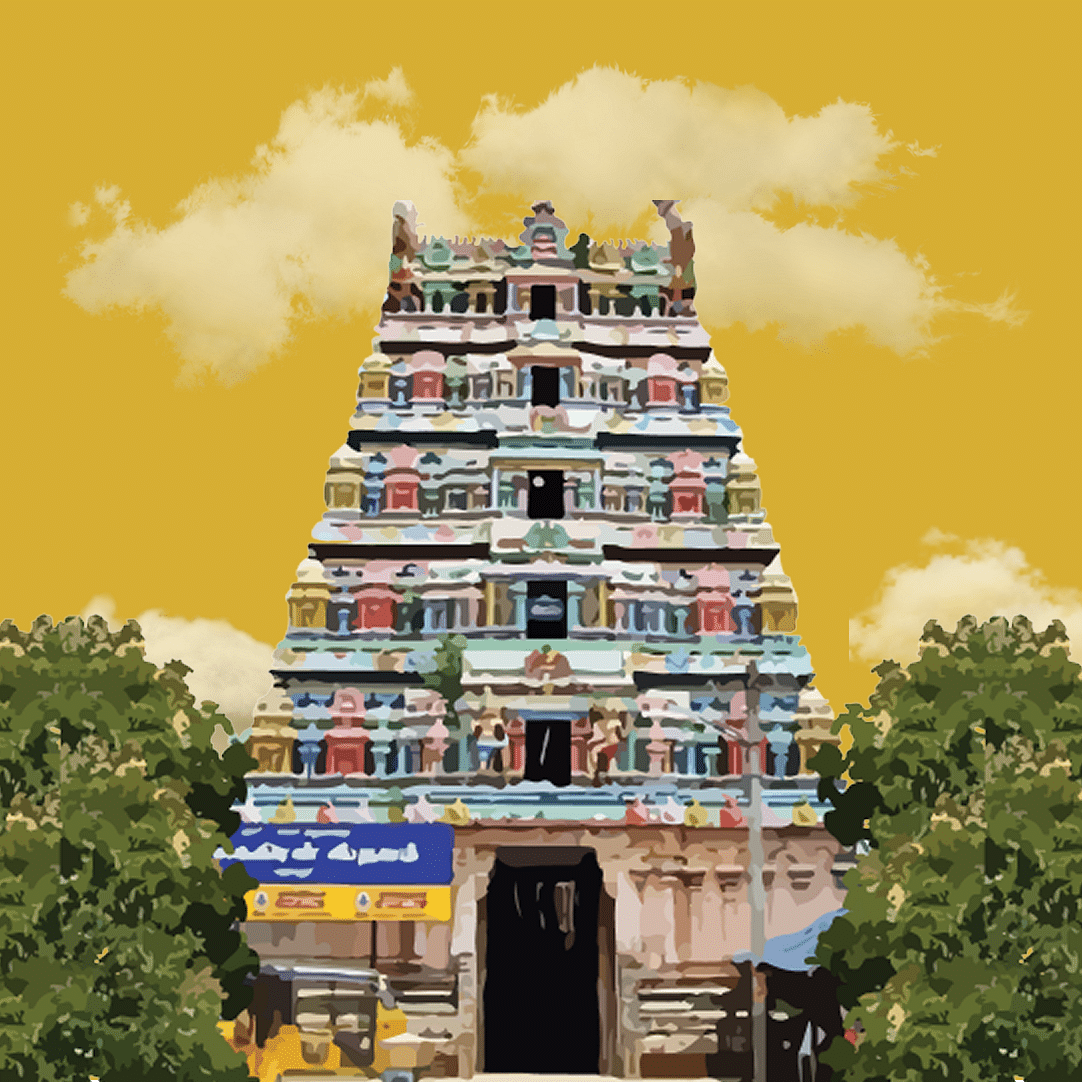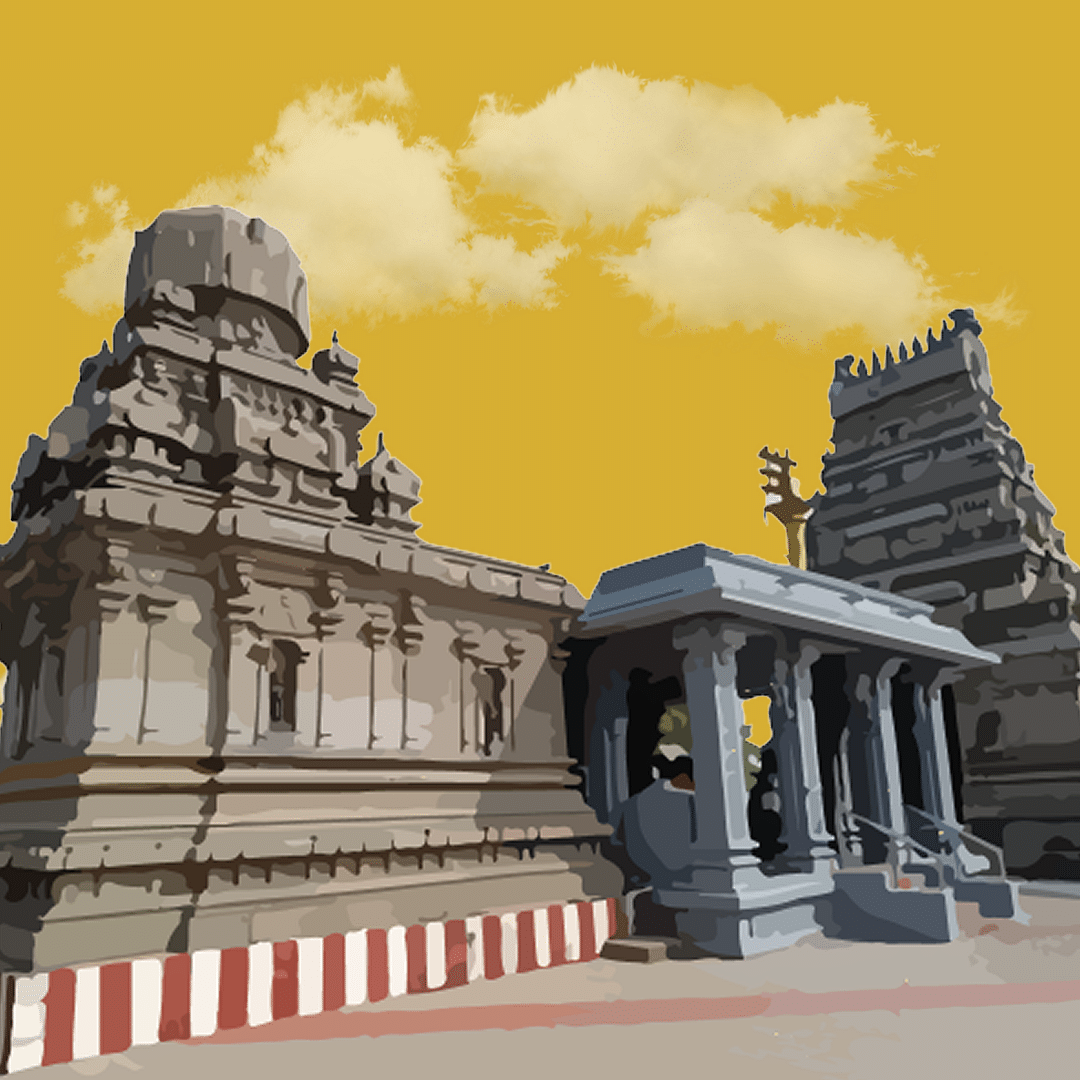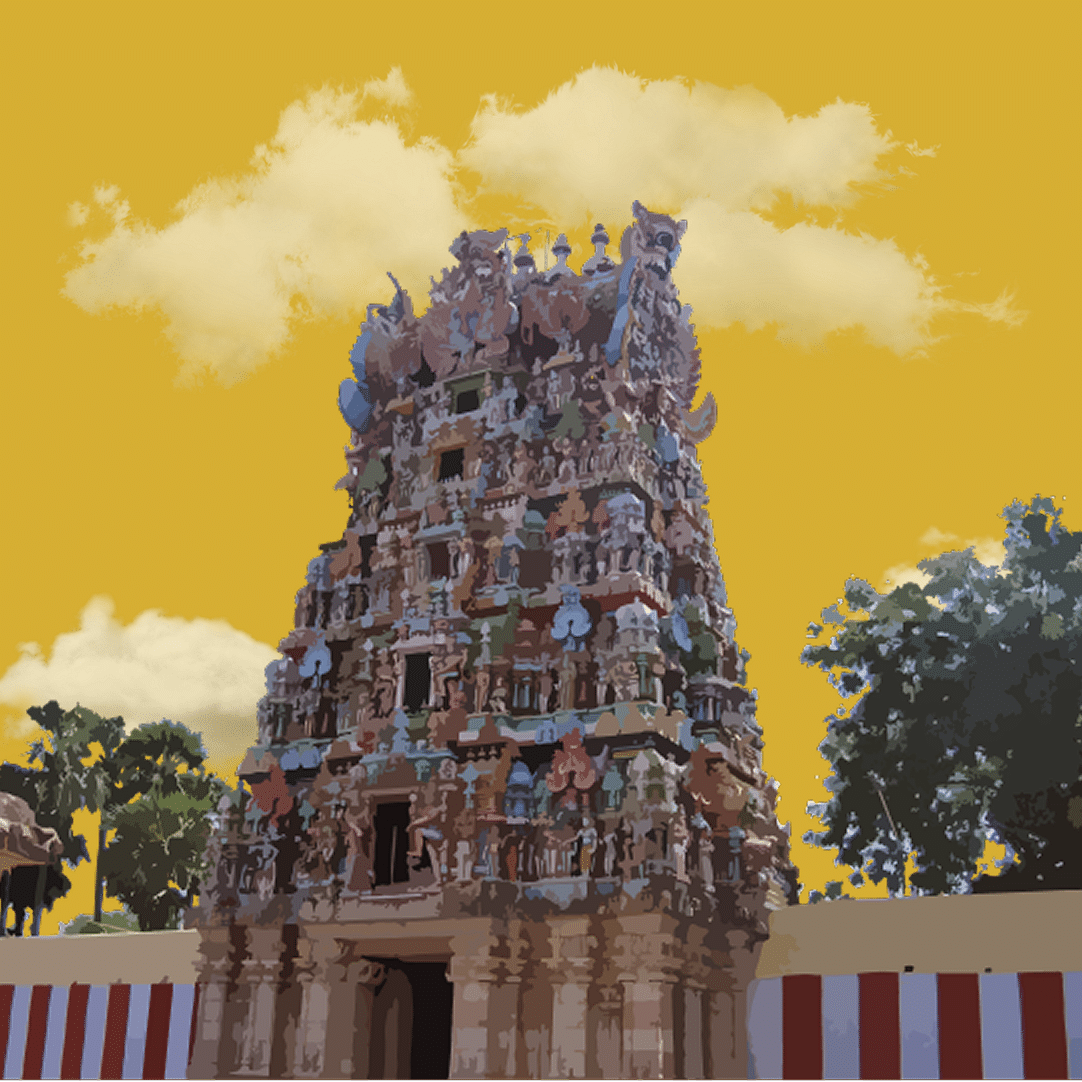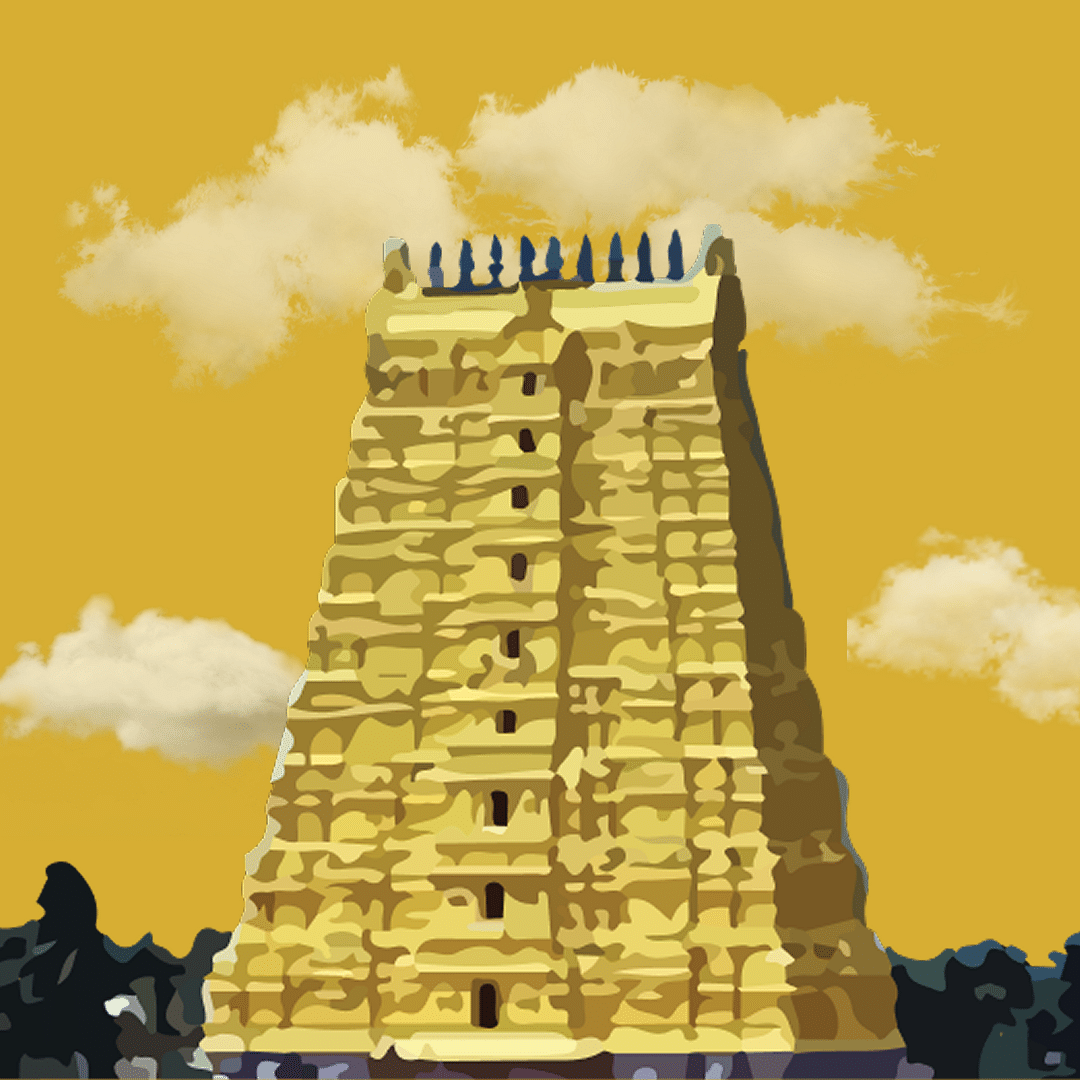Home > The GReaT Divine Darshan > Kakinada
HOLY PLACES
IN KAKINADA
Kakinada is that coastal cousin who knows how to chill and hustle. On one side, it’s all sea breeze, coconut trees, and laid-back beachy charm. On the other hand, it’s buzzing with smart city swagger and 'get-things-done' energy. You can snack on spicy street treats, wander through peaceful mangroves, catch a movie, and still make it to a temple before sunset. Speaking of temples—yes, the city has plenty! Whether you're a history buff, a spiritual seeker, or just here for the architecture, there’s something for everyone in this city. Today, we’re taking you on a tour through our handpicked list of temples that truly capture the spirit of Kakinada. From peaceful sanctuaries to bustling shrines, it’s a divine lineup you won’t want to miss!
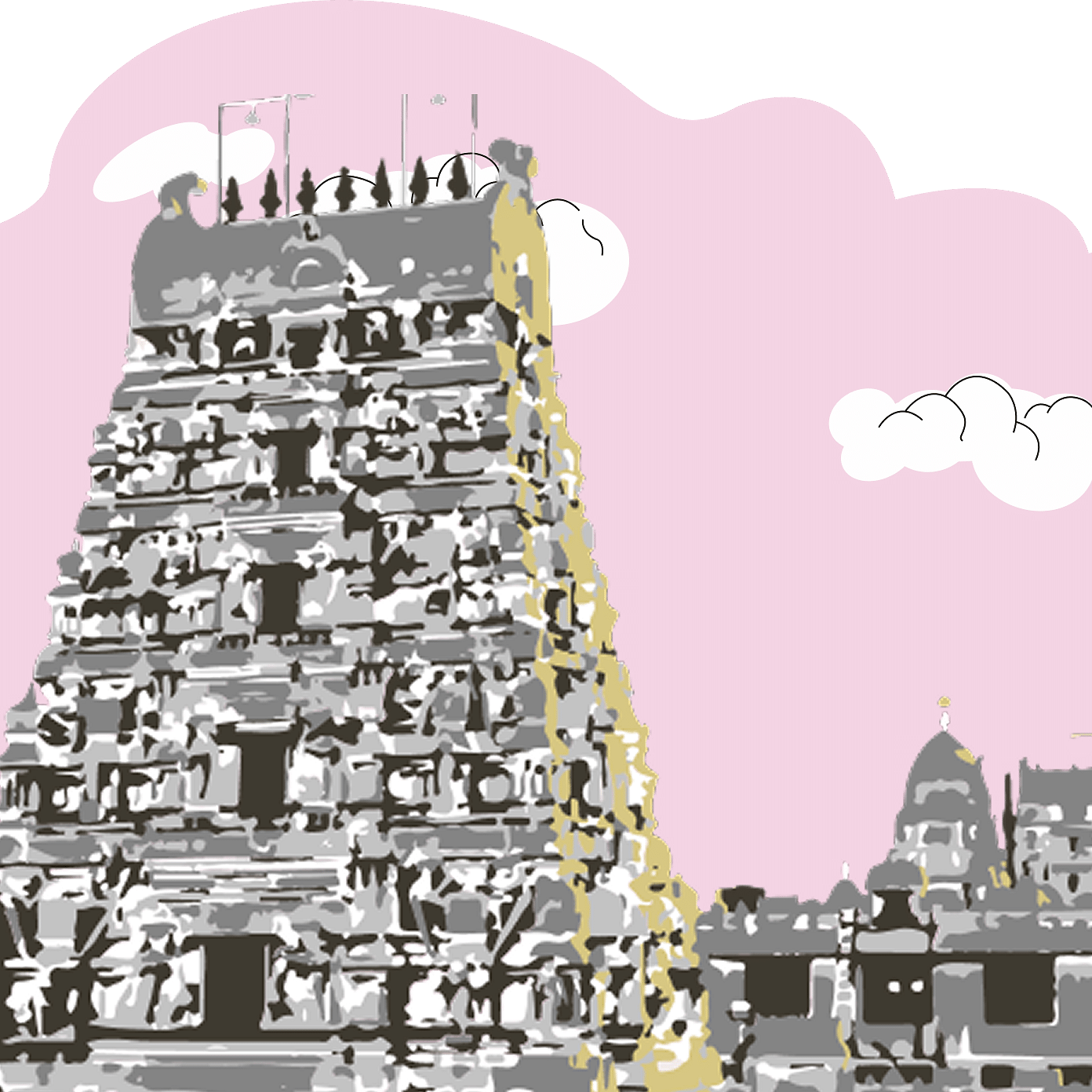
 OUR Hotels
OUR Hotels
IN THE CITY, BY THE SACRED SITES 🏙
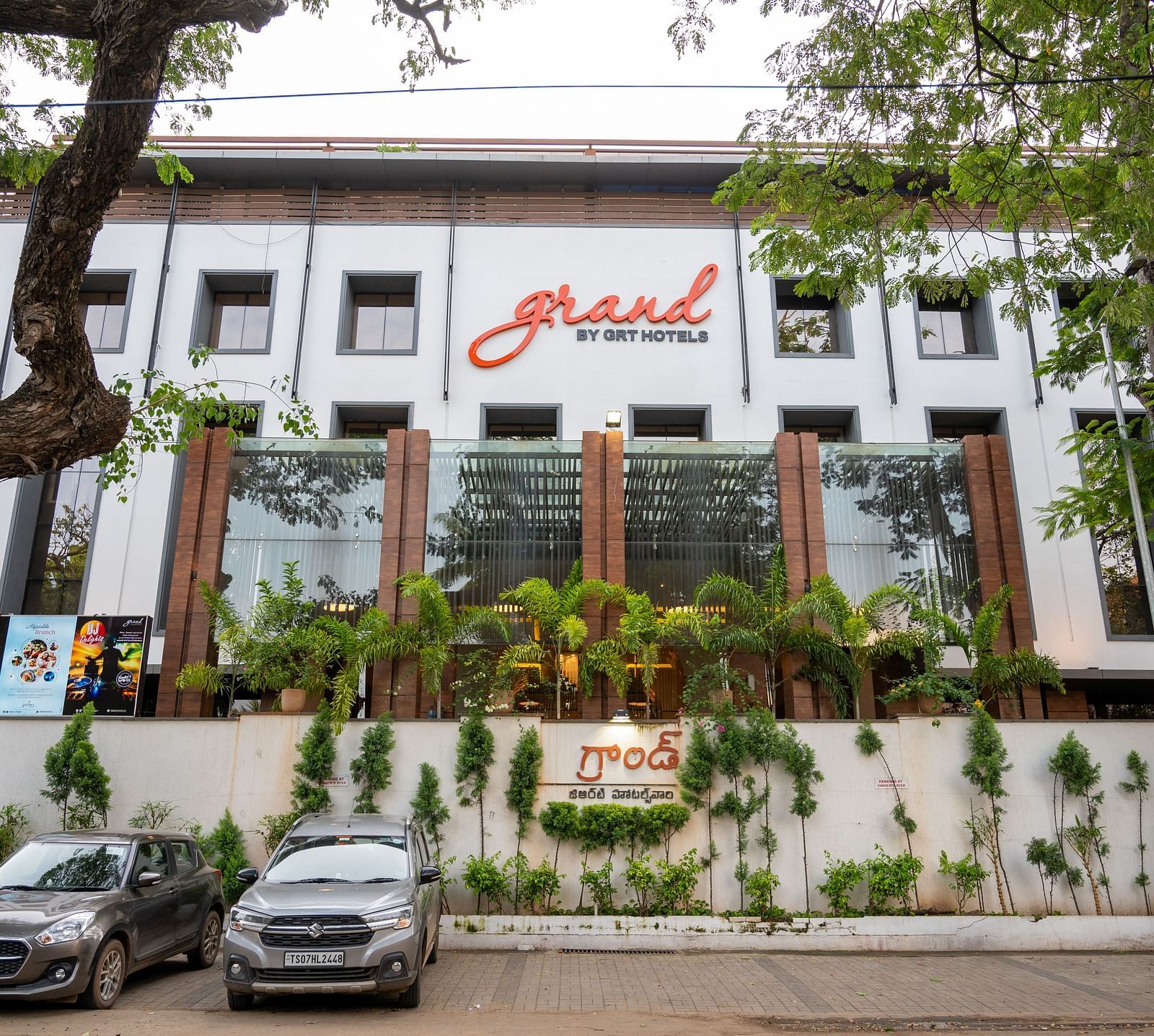
Grand Kakinada by GRT Hotels
At Grand Kakinada by GRT Hotels, we don’t just allow pets—we roll out the red carpet for your fur babies! Right in the heart of spicy, sweet, and super-cool Kakinada, we’re serving chill vibes, rooftop dips, and mangrove adventures just around the corner. Need a divine detour between naps and nosh? Take a short spin to Sri Kukkuteswara Swamy Temple—just about 17 km away, where even Lord Shiva agrees it's worth the drive. Or make it a full-blessing day trip to Sri Veera Venkata Satyanarayana Swamy Temple in Annavaram—47 km from here, but hey, who’s counting when you’re stacking spiritual brownie points? Whether you're chasing coastal calm, exploring temple trails, or simply here to unwind in style, we’ve got you covered.
)
Zibe Luxe Kakinada by GRT Hotels
Kakinada’s two legends? Kaaja and Zibe Luxe, both irresistibly sweet!
Welcome to Zibe Luxe Kakinada, where chill meets thrill and every stay feels like a vibe. Whether you're here to close deals or catch zzz’s, we’re your go-to pitstop for cool comfort, killer food, and non-stop Insta moments. Got a fluffy buddy? Bring ‘em along, we’re pet-friendly! Fuel up at Kondapalli Cafe, where quirky dolls meet drool-worthy dishes (and yes, your feed will thank you). Snap, snack, repeat. Business, beach, or binge-watch in bed, whatever your scene, Zibe Luxe serves it with sass.
 OURDivine Destinations
OURDivine Destinations
TRAVEL THROUGH THE MUSEUMS OF FAITH 🛕
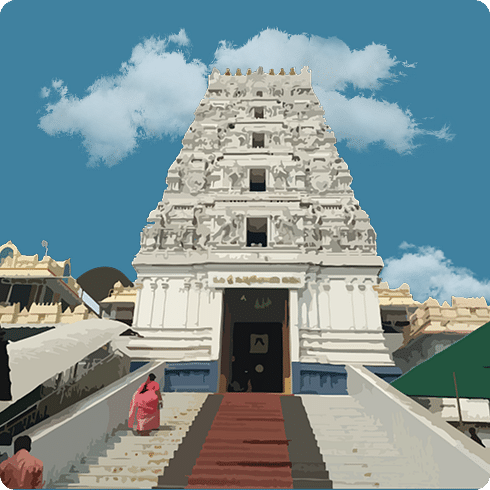
SRI VEERA VENKATA SATHYANARAYANA SWAMY VARI DEVASTHANAM ANNAVARAM ✨
Located in Annavaram, Kakinada district of Andhra Pradesh, this Hindu-Vaishnavite temple is dedicated to Lord Satyanarayana Swamy, an incarnation of Lord Vishnu. The temple is majestically situated at the top of Ratnagiri hill and is a significant pilgrimage site in the region.
Distance from Our Hotel47 km
Timing6:00 a.m. to 12:30 p.m.
1:00 p.m. to 9:00 p.m.FestivalSri Swamyvari Kalyana Mahotsavam: (Apr-May)
Sacred Food OfferedGodhuma Rava Halwa (Wheat Semolina Halwa)
Transportation CostFor assistance, please contact the front desk.
Disclaimer: The temple's timings are subject to change as per the operating committee's decisions.
About Sri Veera Venkata Sathyanarayana Swamy Vari Devasthanam Annavaram:
- The name Annavaram is believed to come from either ‘annam’ (meaning food in Telugu), referring to the tradition of free food distribution, or ‘anina varam’, meaning ‘boon granted’ by the deity.
- The temple stands atop Ratnagiri hill, considered sacred due to mythological links to Meruvu’s sons, Bhadra and Ratnakar, and historical ties to Krishnadevaraya and Alluri Sitarama Raju.
- The temple was built in the form of a chariot, with wheels representing the Sun and Moon, symbolising cosmic movement and time, as described in ancient scriptures.
- The main idol is a single cylindrical form representing the Trimurti, Brahma (base), Shiva (middle), and Vishnu (top), symbolising creation, preservation, and destruction.
- The temple’s lower floor houses the sacred yantra and peetham, encircled by idols of Ganesha, Suryanarayana, Bala Tripurasundari, and Maheshwara, forming the Panchayatana.
- The goddess Vana Durga is believed to guard the temple premises at night, while Lord Sri Rama is worshipped as the Kshetra Palaka (protector) of the temple.
Divine Facts:
Once upon a dream, literally, in the peaceful village of Annavaram, something wild went down. A chill Brahmin named Eeranki Prakasa Rao and the local big-shot royal, Raja Inuganti Venkata Ramarayanim Bahadur, both woke up like, ‘Did you dream that too?’ Yep, Lord Vishnu had slid into their dreams like, ‘Yo, mark your calendars! On Sravana Sukla Vidiya, under Makha Nakshatra, I’m going live on Ratnagiri Hill, bring the rituals, I’m ready for prime time!’ So the crew, aka villagers, hiked up Ratnagiri, sunbeams dancing through the trees, and BAM! There it was, a glowing idol chilling under a Krishna Kutaja tree like the ultimate cosmic Easter egg. With goosebumps and devotion levels on max, they scooped it up and gave it the royal treatment: full-on rituals, sacred chants, and the Vaikuntha Narayana Yantra flown in from Kasi (talk about divine logistics!).That tiny temple? Just a humble shed back then. But powered by heart, hype, and holy vibes, it levelled up into the stunning Annavaram Temple we all adore today.
SRI KUKKUTESWARA SWAMY TEMPLE ✨
This ancient temple is dedicated to Lord Shiva, worshipped here as Kukkuteswara Swamy. It also houses the Puruhutika Devi Temple within the same complex, which is considered the 10th of the 18 Shakti Peethas.
Distance from Our Hotel17 km
Timing5:30 a.m. to 12:30 p.m.
4:30 a.m. to 8:30 p.m.FestivalNavaratri: (Sep-Oct)
Annual festival of Jagannadha Swamy: (Jun-Jul)
Maha Shivaratri: (Feb-Mar)
Maghabahula Ekadasi: (Jan-Feb)Sacred Food OfferedPulihora (Tamarind Rice)
Transportation CostFor assistance, please contact the front desk.
Disclaimer: The temple's timings are subject to change as per the operating committee's decisions.
About Sri Kukkuteswara Swamy Temple:
- The temple is revered in both Shiva worship and Shaktism, and is recognised as one of the eighteen Maha Shakti Peethas.
- The main deity is Sri Kukkuteswara Swamy, a form of Lord Shiva as a rooster, enshrined as a self‑manifested Spatika Lingam
- The temple features a massive Eka Sila Nandi, one of the largest single-stone Nandi statues in India.
- On-site is the shrine of Puruhutika Devi, a Maha Shakti Peetha marking the spot where a portion of Sati’s body fell.
- The temple tank is called Pada Gaya Sarovar, one of the Three Gayas of India; bathing here is believed to absolve one’s sins
- Pithapuram is often called Dakshina Kasi (‘Southern Kasi’), being one of the twelve sacred pilgrimage sites (Punya Kshetras)
- The complex includes shrines to Rajarajeswari Devi, Kunti Madhava Swamy, Dattatreya, and others, making it a multifaceted spiritual hub.
Divine Facts:
Welcome to Kukkuteswara Swamy Temple in Once upon a time, Gayasura, a super-devoted follower of Lord Vishnu, got an incredible boon: anyone who saw him would achieve Moksha. Imagine having that kind of power; he was basically a walking VIP pass to heaven! So, Gayasura thought, ‘Why not go big?’ and started growing, bigger and bigger, until he was a mountain-sized guy, thinking everyone could just look at him and get Moksha. The gods, however, weren’t so sure about this whole “Moksha for all” plan. See, only the deserving should get it. So, Lord Vishnu, Lord Brahma, and Lord Shiva devised a clever trick. They disguised themselves as Brahmins and asked Gayasura if they could perform a sacred ritual on his giant body for seven days. Gayasura, always eager to help, said, “Sure, use my body as a ritual space!” His head is in Bihar, his belly is in Orissa, and his legs are in Pithapuram, perfect! But on the last day, Shiva in the form of a rooster, crowed at midnight instead of dawn. Gayasura, thinking it was morning, woke up early and messed up the ritual. The gods scolded him, and Gayasura, feeling guilty, was ready to make up for it. In the end, the gods forgave him and made the place sacred, with Lord Vishnu at his head, Brahma at his belly, and Shiva at his feet. A holy hotspot for all to visit!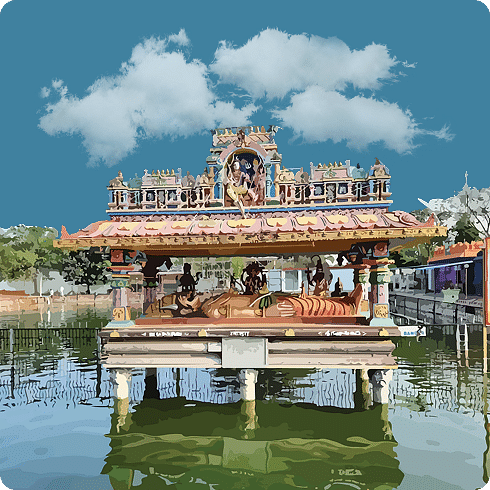

DRAKSHARAMA SRI MANIKYAMBADEVI SAMETHA SRI BHEEMESWARA SWAMI TEMPLE ✨
One of the rare Pancharama Kshetras, dedicated to Lord Shiva. Located in Draksharam, Built in the 9th–10th century CE by the Eastern Chalukya kings, it is a masterpiece of Dravidian architecture.
Distance from Our Hotel30 km
Timing6:00 a.m. to 12:00 p.m.
3:00 p.m. to 8:00 p.m.FestivalSarrannavarathri Festival: (Oct)
Sacred Food OfferedRava Laddoo & Pulihora (Tamarind Rice)
Transportation CostFor assistance, please contact the front desk.
Disclaimer: The temple's timings are subject to change as per the operating committee's decisions.
About Draksharama Sri Manikyambadevi Sametha Sri Bheemeswara Swami Temple:
- The Draksharama Temple, also known as Sri Bhimeswara Swami Temple, is located in Draksharamam, in the East Godavari district of Andhra Pradesh, India.
- It is one of the Pancharama Kshetras, a group of five powerful temples dedicated to Lord Shiva in Andhra Pradesh.
- The temple is believed to have been constructed between 892 AD and 902 AD by the Eastern Chalukya King Bhima I, who also consecrated the Shiva Linga and named the temple Bhimeswara after himself.
- The main deity is a Spatika (crystal) Linga, standing approximately 2.6 metres tall, considered highly sacred and unique.
- The temple complex features three concentric compound walls, reflecting the architectural grandeur of the time.
- The site is popularly known as Dakshina Kasi or Southern Varanasi, due to its spiritual importance.
- The temple was later developed and patronised by several dynasties, including the Kalyani Chalukyas, Cholas, Eastern Gangas, Kakatiyas, Reddi Kings, Vijayanagara rulers, and other local kings.
- The temple is also associated with Goddess Manikyamba Devi, one of the 18 Shakti Peethas, making it an important site for Shakta worshippers as well.
- The revered Telugu poet Srinatha Kavi Sarvabhowma elaborated on the glory of this temple in his literary work Bhimeswara Puranam.
- Over time, the place has been referred to by various names such as Jananathapuram, Pedda Dakaremi, Bhimanathapuram, Dakshapovana, and Dakshina Kasi, as mentioned in various inscriptions.
- Draksharamam is situated approximately 28 km from Kakinada, 50 km from Rajahmundry, and 25 km from Amalapuram, making it a well-connected pilgrimage destination.
Divine Facts:
In an age when time was measured in yugas and the stars wrote the calendar, there stood a sacred land on the eastern bank of the River Godavari—Draksharama, revered as the abode of Daksha Prajapati. This was no ordinary stretch of soil; it was a divine hotspot of myth and power. Daksha, the proud progenitor and father-in-law of Lord Shiva, was also the father of Goddess Sati, Shiva’s deeply devoted consort. Now, as myths would have it, Daksha decided to host a grand yagna—a ritual so elaborate it could have given the heavens a run for their sanctity. Invitations were sent to gods, sages, and celestial dignitaries alike. But when he arrived at Mount Kailasa to personally invite the divine son-in-law, Lord Shiva happened to be in deep meditation, entirely absorbed in his own cosmic stillness. Daksha, unfortunately, blessed with a robust ego, mistook this serene silence for arrogance. Offended by what he saw as disregard, he left without extending the invitation to Shiva—or to his own daughter, Sati. Sati, however, wished to attend. After all, it was her father’s ritual, and divine protocol aside, there was family involved. Despite Shiva’s gentle warnings about the likely outcome, Sati followed her heart and made her way to her parental home, uninvited. What awaited her was not affection, but indifference. No greeting, no warmth, not even a trace of familial welcome. The humiliation cut deep, and rather than bear the dishonour of being treated as an outsider among her own kin, Sati chose to give up her earthly form—a sacrifice born from pain and pride. Upon hearing of her tragic end, Lord Shiva's grief turned to cosmic rage. He unleashed Veerabhadra, a fierce emanation born to avenge the insult. What followed was divine retribution—Daksha’s pride was crushed, his ritual dismantled, and order restored in the most dramatic of fashions. But the tale does not end there. Overwhelmed by sorrow, Shiva carried Sati’s body across the cosmos, dancing the fearsome Tandava—a dance so intense, it threatened the very fabric of the universe. To bring balance back, Lord Vishnu released his Sudarshana Chakra, which gently dismembered Sati’s body. Her sacred remains fell across eighteen different locations in the Indian subcontinent, each becoming a Shakti Peetha—a revered seat of divine feminine energy. And where did her manikya (jewel)-like presence descend? Draksharama. Here, she is worshipped as Sri Manikyamba Devi, enshrined alongside Lord Bhimeswara Swamy, a form of Lord Shiva. Together, they form one of the most powerful and spiritually vibrant tandems in Indian mythology. Thus, what began as a tale of wounded pride and unbearable grief evolved into one of divine remembrance, where cosmic balance was restored, and sacred geography was redefined.
